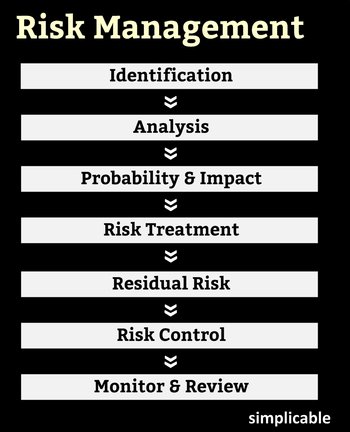

Identification
Giving all stakeholders an opportunity to identify risk. This can increase acceptance of a program or project as everyone is given a chance to document all the things that might go wrong. The diverse perspectives of stakeholders helps to develop a comprehensive list of risks. It is also possible to use databases of issues with that occurred with similar business processes, programs or projects in your industry. Knowledge sources such as lessons learned and the risk registers of historical projects can also be used.Analysis
Developing context information for each risk such as moment of risk.Probability & Impact
Assessing the probability and impact of each risk. These can be single estimates such as high, medium and low. Alternatively, they can be a probability distribution that model multiple costs and associated probabilities for each risk.Risk Treatment
Planning a treatment for each risk such as acceptance, mitigation, transfer, sharing or avoidance. Risks that are both low impact and low probability typically aren't treated.Residual Risk
Assess residual risk including secondary risks that result from risk mitigation, transfer or sharing.Risk Control
Implement identified controls for risk mitigation, sharing, avoidance and transfer.Monitor & Review
Continuously identify new risks as things progress, monitor implementation of controls and communicate risk to stakeholders.| Overview: Risk Management Process | ||
Type | ||
Definition | The process of identifying and controlling potential losses. | |
Related Concepts | ||











